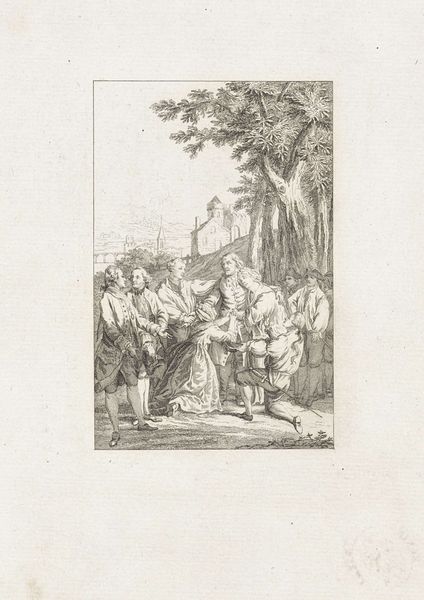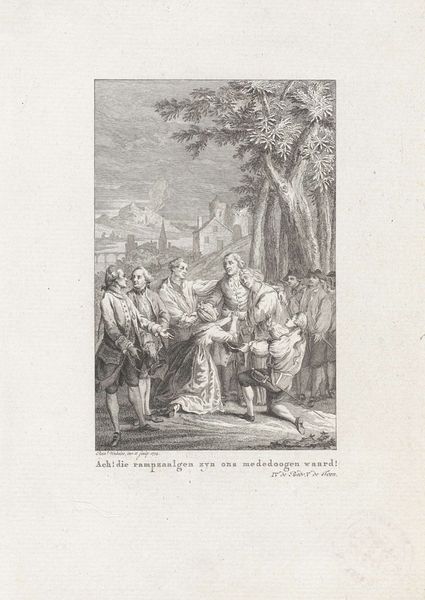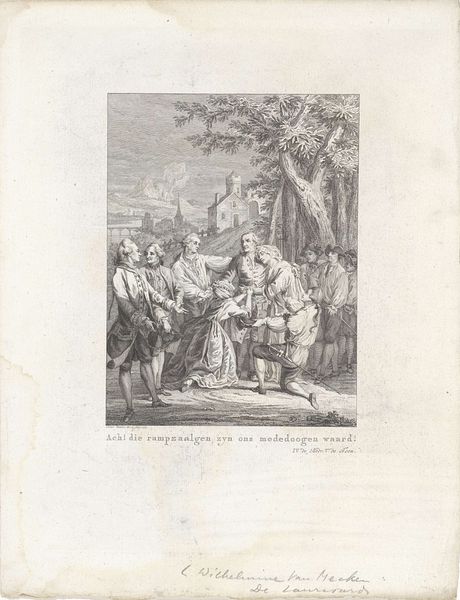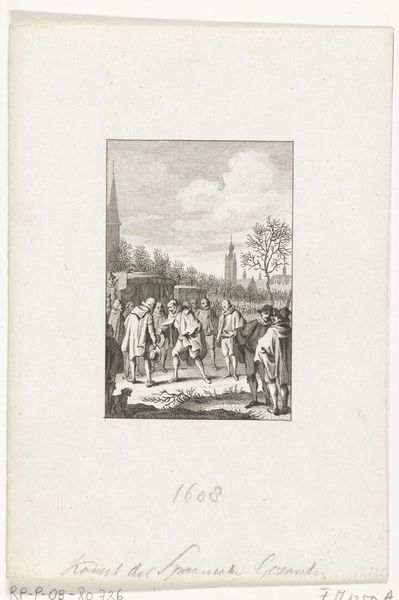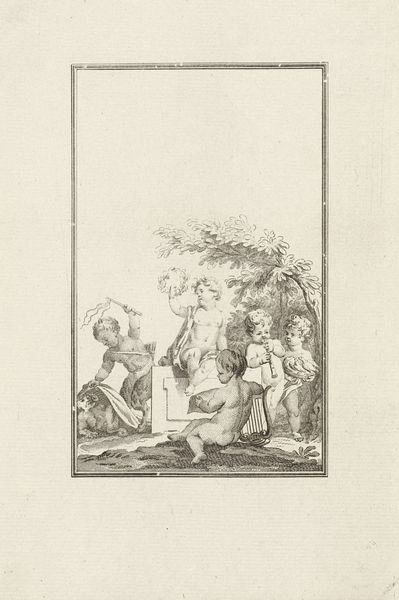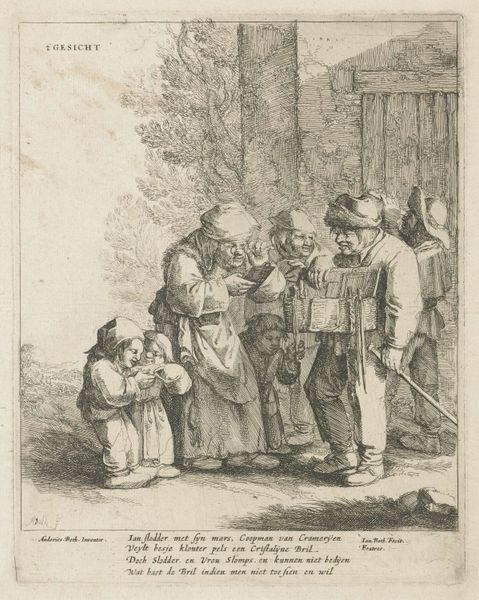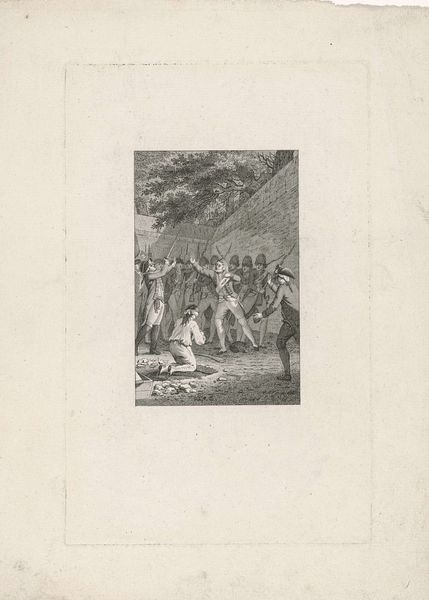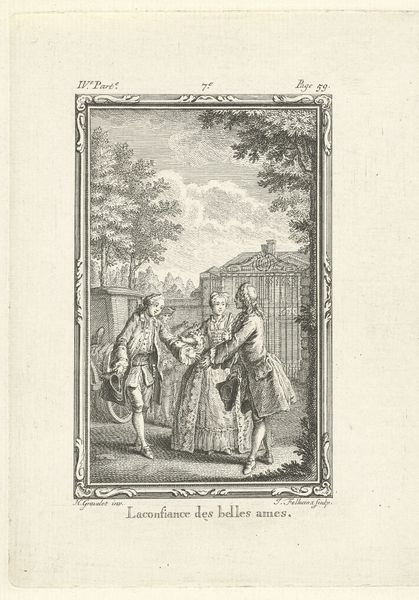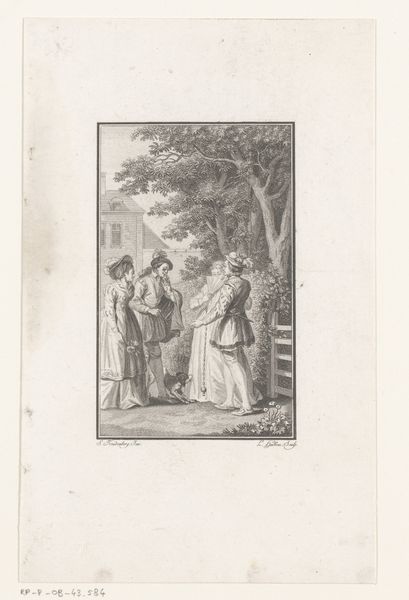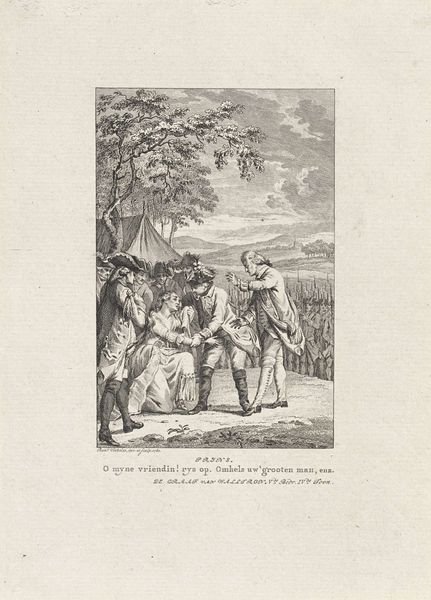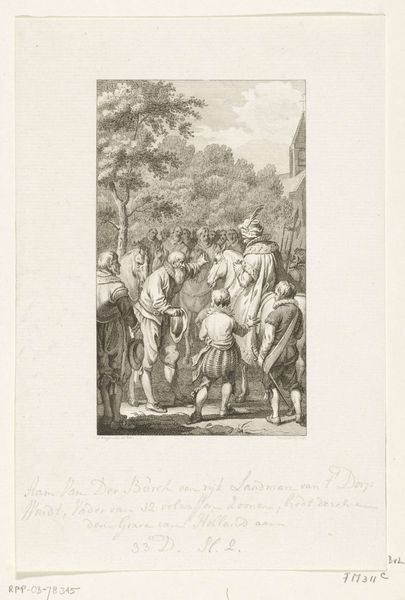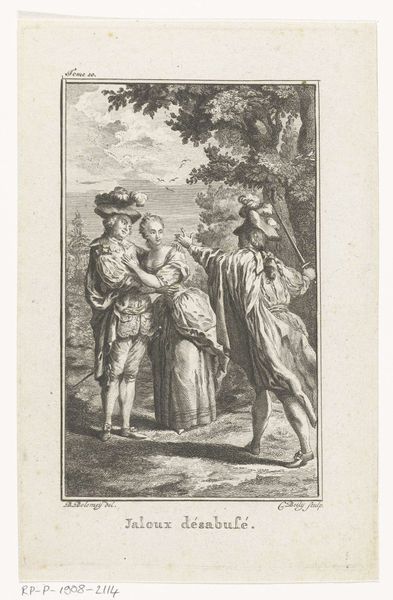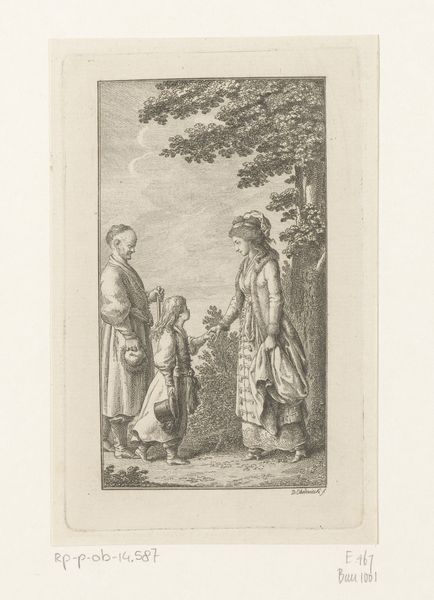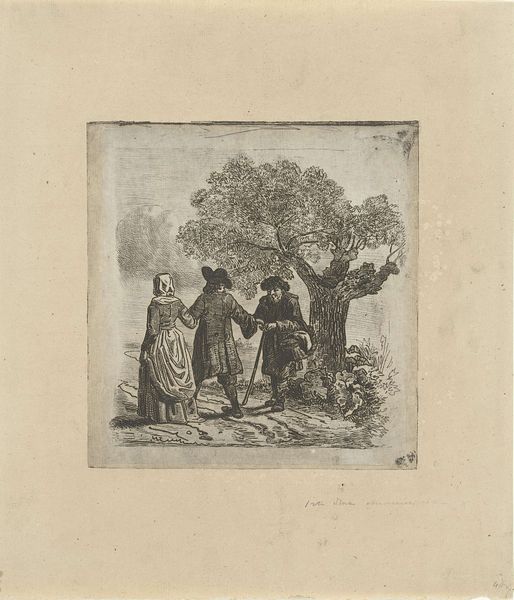
Twee mannen bereiden zich voor op een tweegevecht met pistolen 1796
0:00
0:00
reiniervinkeles
Rijksmuseum
print, engraving
# print
#
romanticism
#
genre-painting
#
engraving
Dimensions: height 211 mm, width 149 mm
Copyright: Rijks Museum: Open Domain
Curator: This engraving, created in 1796 by Reinier Vinkeles, is titled "Two Men Preparing for a Duel with Pistols." It’s currently housed in the Rijksmuseum collection. What are your immediate impressions? Editor: It’s somber, yet strangely… poised? The gathering of onlookers lends it this strange weight, while the setting amidst the trees offers this contradictory quiet solemnity. Curator: Interesting observation. Let's look closer at the materials. As an engraving, this is a reproductive print; multiple copies could be made and distributed widely. Consider the implications. Who had access to such images and what kind of craftsmanship and production methods went into achieving these effects? Editor: Precisely. Printmaking allowed for democratization, of a sort. Who would see an image like this, of these two men engaged in an aristocratic—though potentially deadly—dance? What values regarding honor or even acceptable conflict resolution would be spread and validated by such images? It's all tied to a social discourse. Curator: Yes! Engravings were not inexpensive, so primarily it would have been a fairly affluent audience who would possess such images. Moreover, there's this sense of almost...theatricality about it all, staged ritualistic performances in a secluded natural setting, which romanticizes the means of handling confrontation and status conflicts. Editor: Absolutely. And beyond just romance and valorizing male conflict, it's worth questioning whose stories get memorialized. There’s clearly no focus on who provided and crafted materials that enabled the making of such engravings, not to mention the labor of preparing the grounds where such a deadly performance unfolds. How can these images also serve to reveal erasures and absent histories of race, class, and gender from official records? Curator: Excellent point. Thinking about that erasure really contextualizes the artwork. Thanks for bringing this fresh perspective into our considerations! Editor: Of course! And thank you for emphasizing that we consider this art within material confines!
Comments
No comments
Be the first to comment and join the conversation on the ultimate creative platform.
